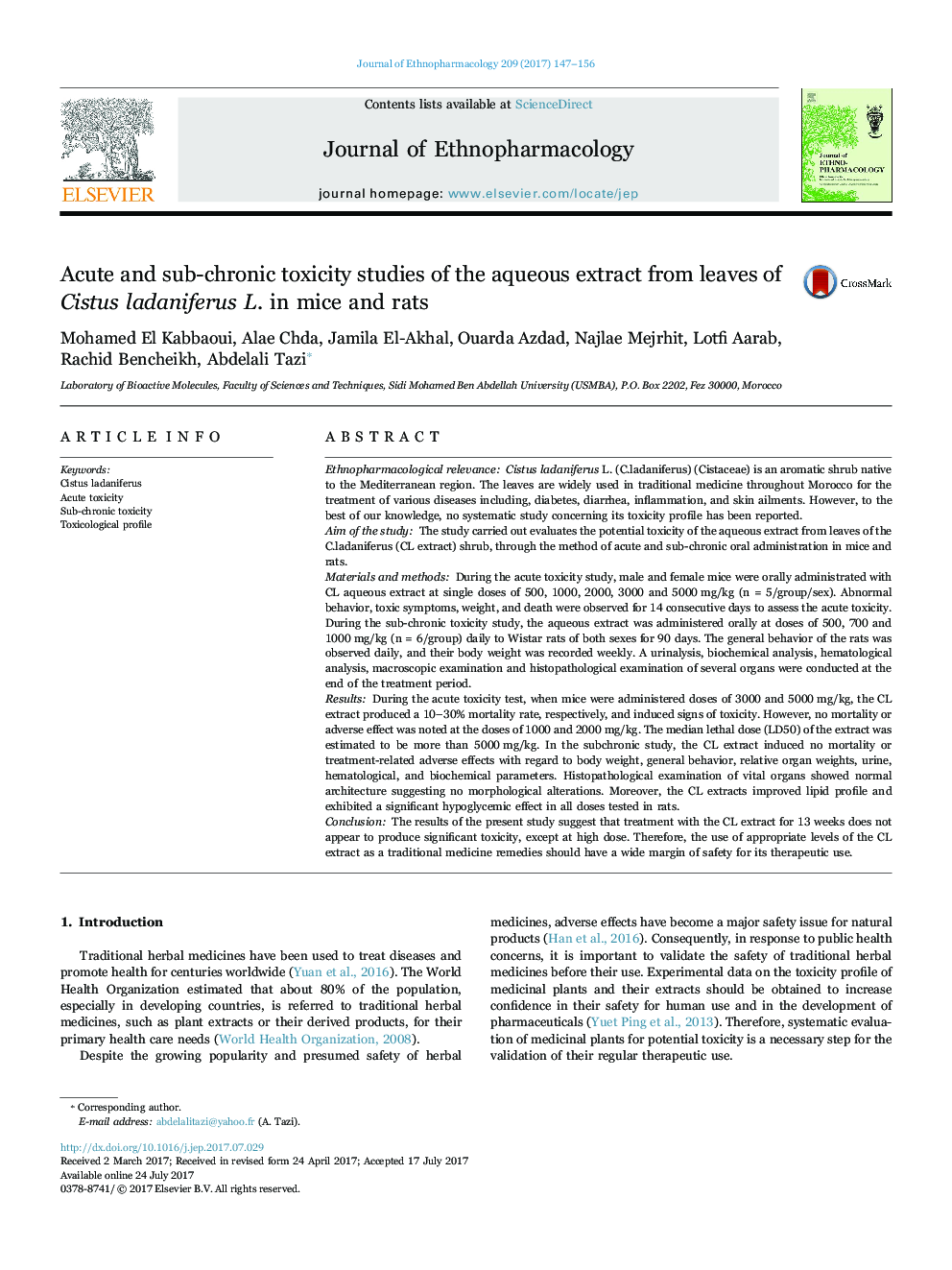| Article ID | Journal | Published Year | Pages | File Type |
|---|---|---|---|---|
| 5555982 | Journal of Ethnopharmacology | 2017 | 10 Pages |
Ethnopharmacological relevanceCistus ladaniferus L. (C.ladaniferus) (Cistaceae) is an aromatic shrub native to the Mediterranean region. The leaves are widely used in traditional medicine throughout Morocco for the treatment of various diseases including, diabetes, diarrhea, inflammation, and skin ailments. However, to the best of our knowledge, no systematic study concerning its toxicity profile has been reported.Aim of the studyThe study carried out evaluates the potential toxicity of the aqueous extract from leaves of the C.ladaniferus (CL extract) shrub, through the method of acute and sub-chronic oral administration in mice and rats.Materials and methodsDuring the acute toxicity study, male and female mice were orally administrated with CL aqueous extract at single doses of 500, 1000, 2000, 3000 and 5000Â mg/kg (n = 5/group/sex). Abnormal behavior, toxic symptoms, weight, and death were observed for 14 consecutive days to assess the acute toxicity. During the sub-chronic toxicity study, the aqueous extract was administered orally at doses of 500, 700 and 1000Â mg/kg (n = 6/group) daily to Wistar rats of both sexes for 90 days. The general behavior of the rats was observed daily, and their body weight was recorded weekly. A urinalysis, biochemical analysis, hematological analysis, macroscopic examination and histopathological examination of several organs were conducted at the end of the treatment period.ResultsDuring the acute toxicity test, when mice were administered doses of 3000 and 5000Â mg/kg, the CL extract produced a 10-30% mortality rate, respectively, and induced signs of toxicity. However, no mortality or adverse effect was noted at the doses of 1000 and 2000Â mg/kg. The median lethal dose (LD50) of the extract was estimated to be more than 5000Â mg/kg. In the subchronic study, the CL extract induced no mortality or treatment-related adverse effects with regard to body weight, general behavior, relative organ weights, urine, hematological, and biochemical parameters. Histopathological examination of vital organs showed normal architecture suggesting no morphological alterations. Moreover, the CL extracts improved lipid profile and exhibited a significant hypoglycemic effect in all doses tested in rats.ConclusionThe results of the present study suggest that treatment with the CL extract for 13 weeks does not appear to produce significant toxicity, except at high dose. Therefore, the use of appropriate levels of the CL extract as a traditional medicine remedies should have a wide margin of safety for its therapeutic use.
Graphical abstractDownload high-res image (168KB)Download full-size image
